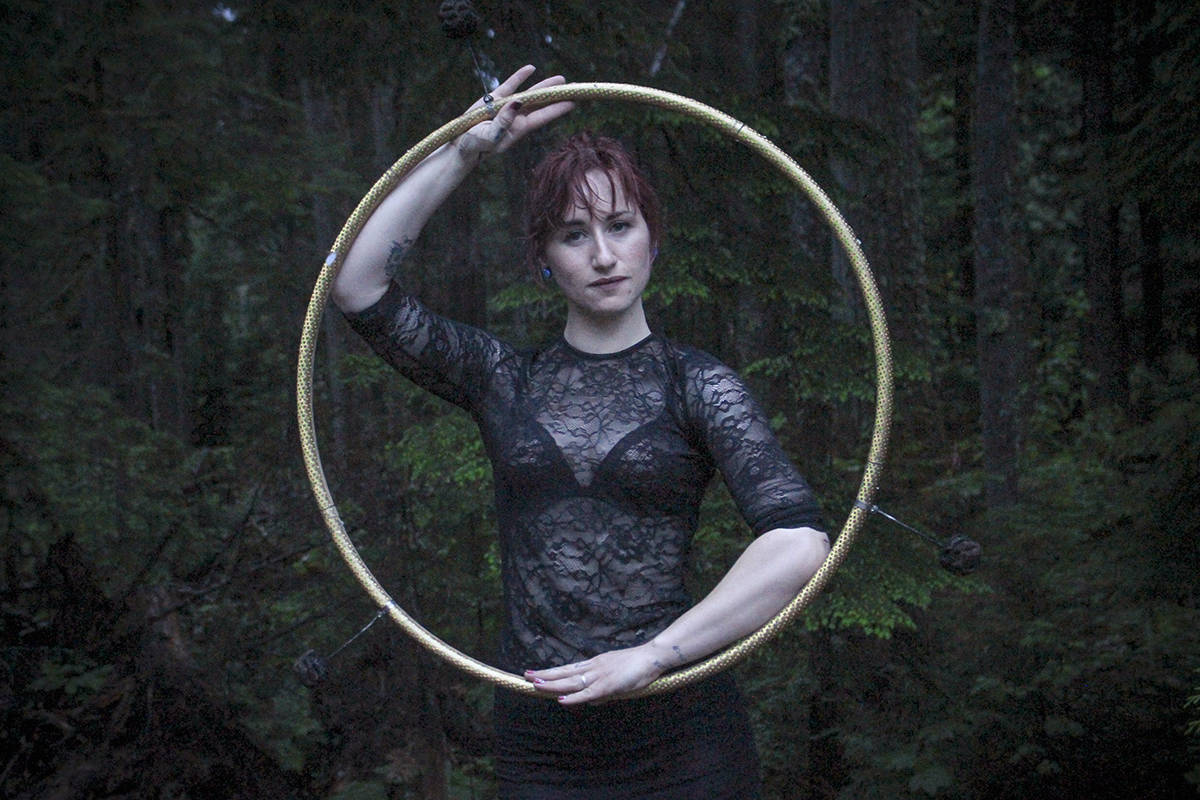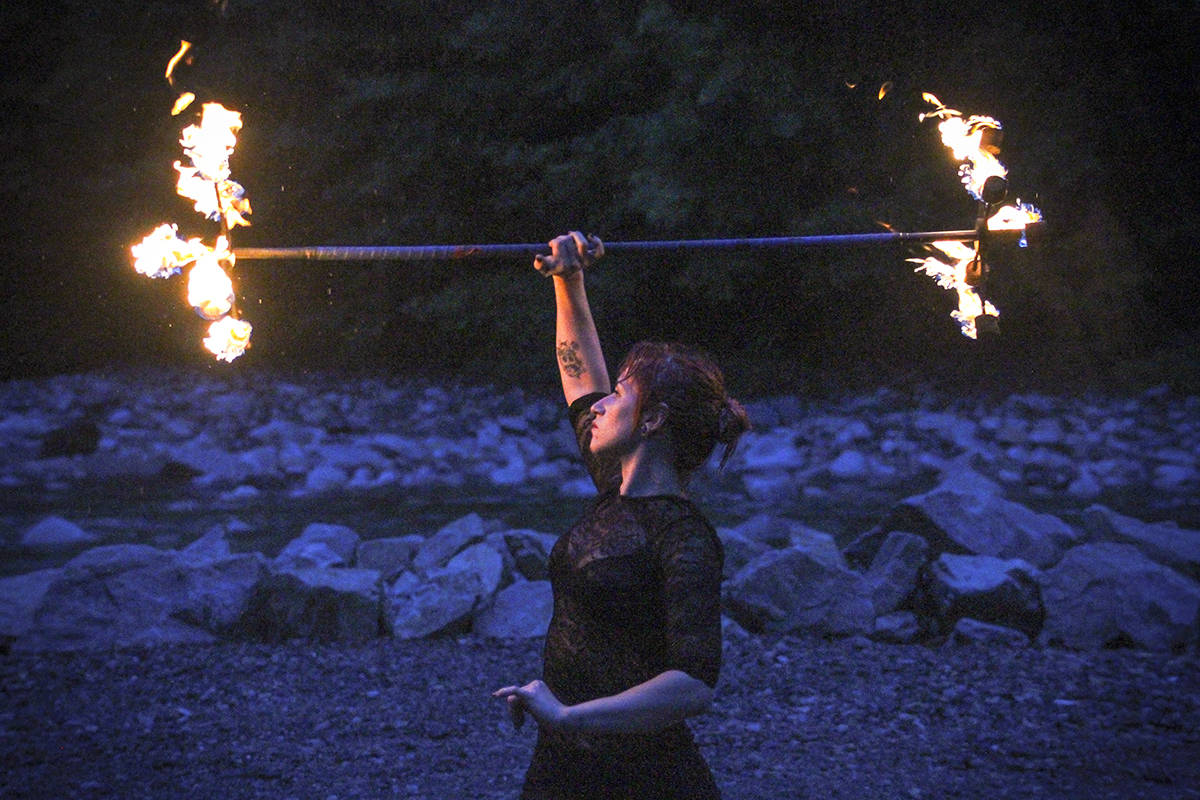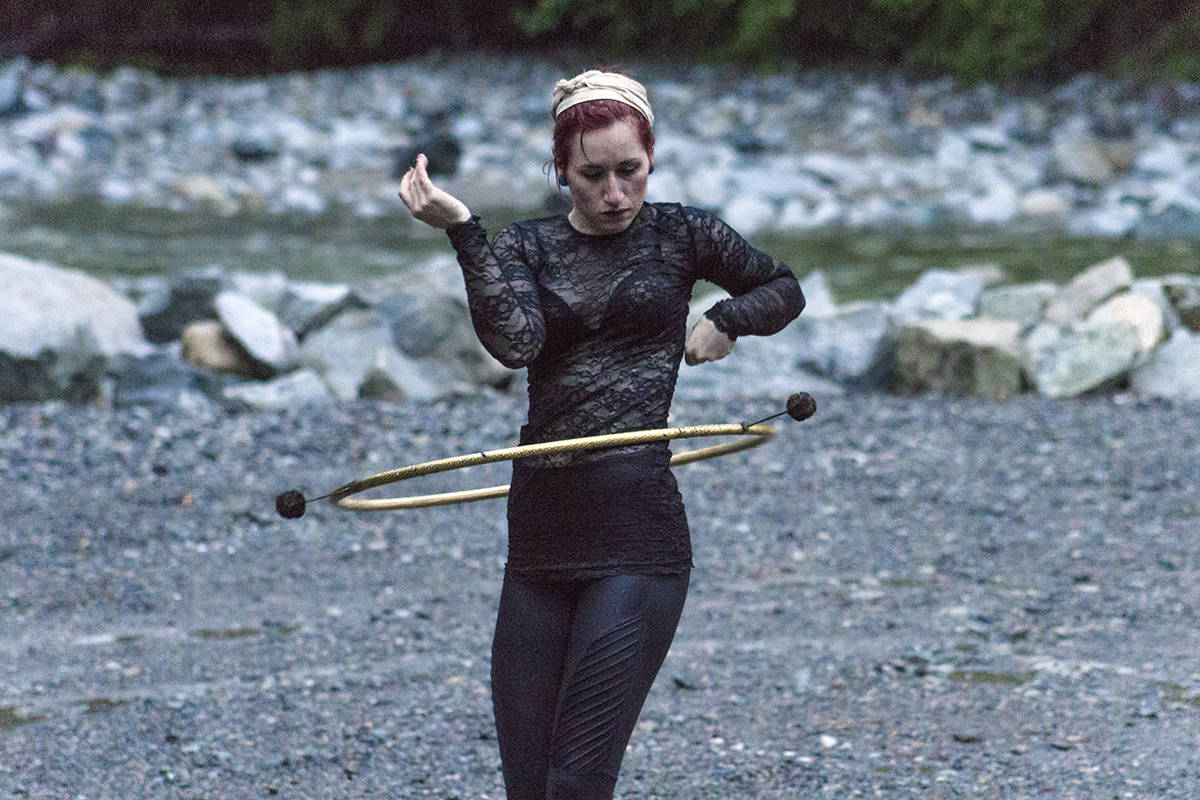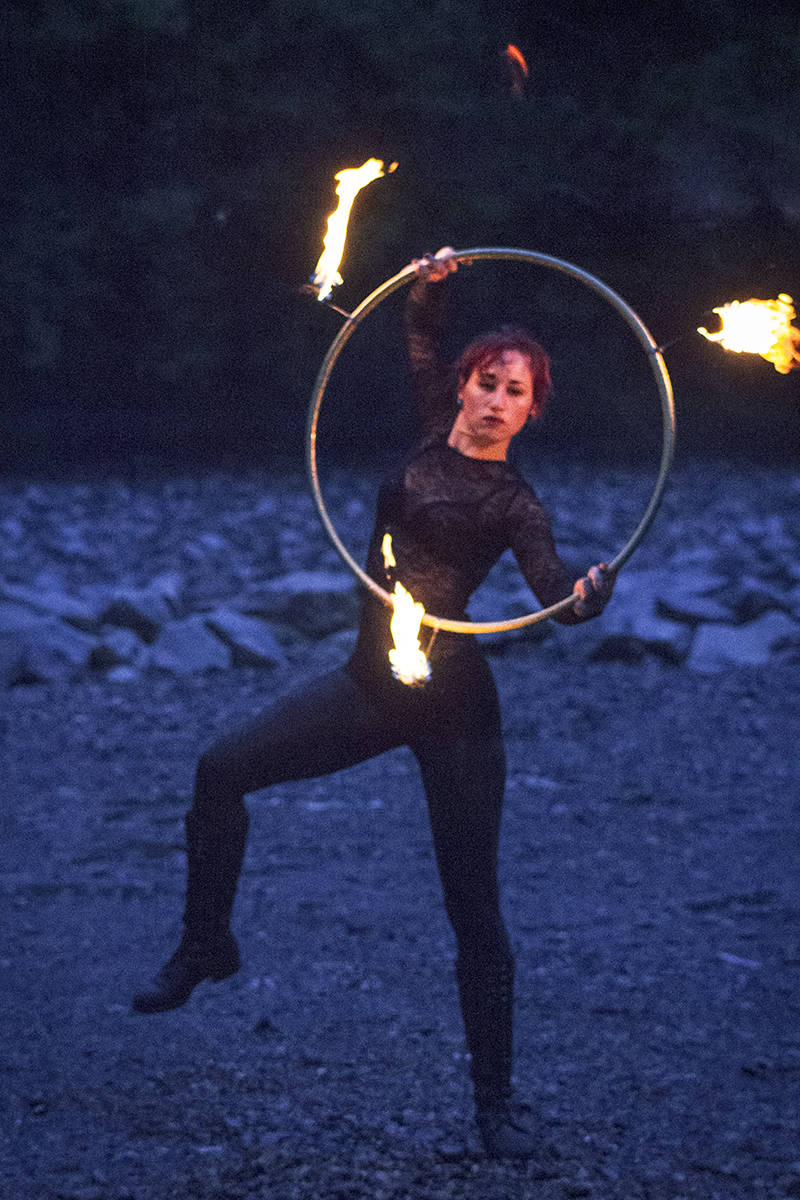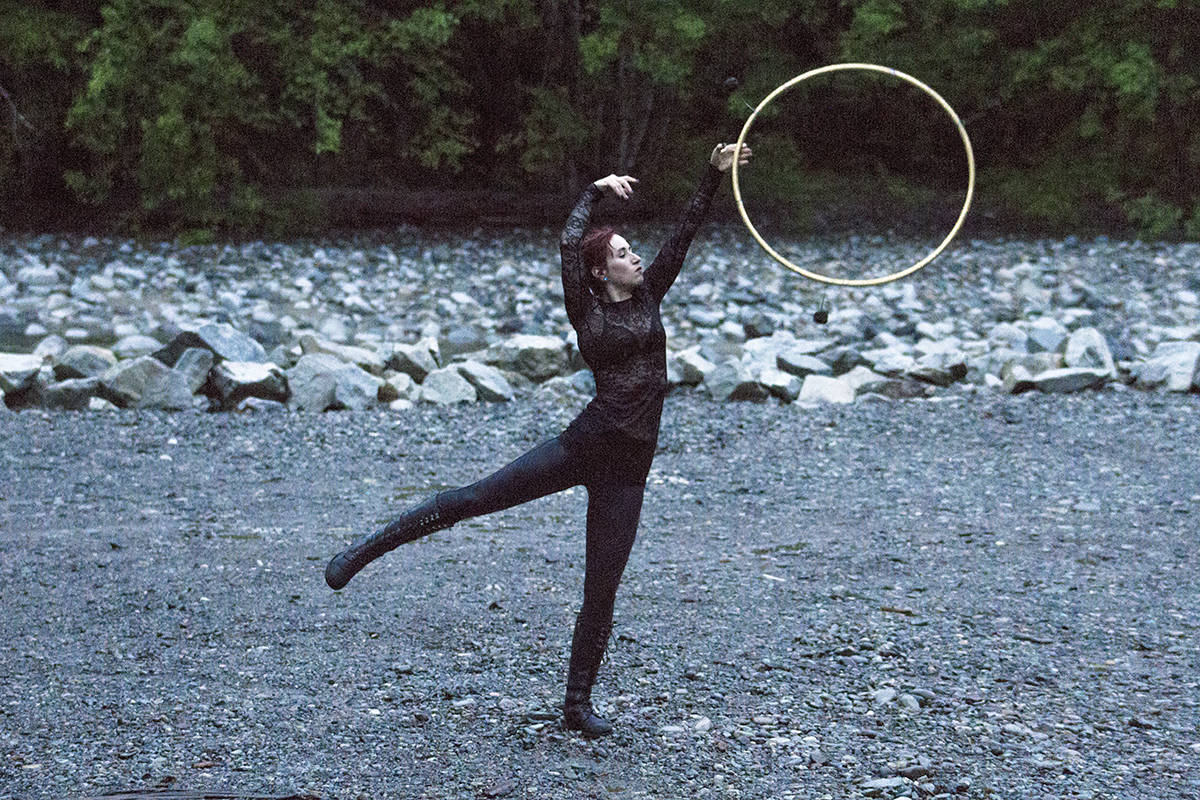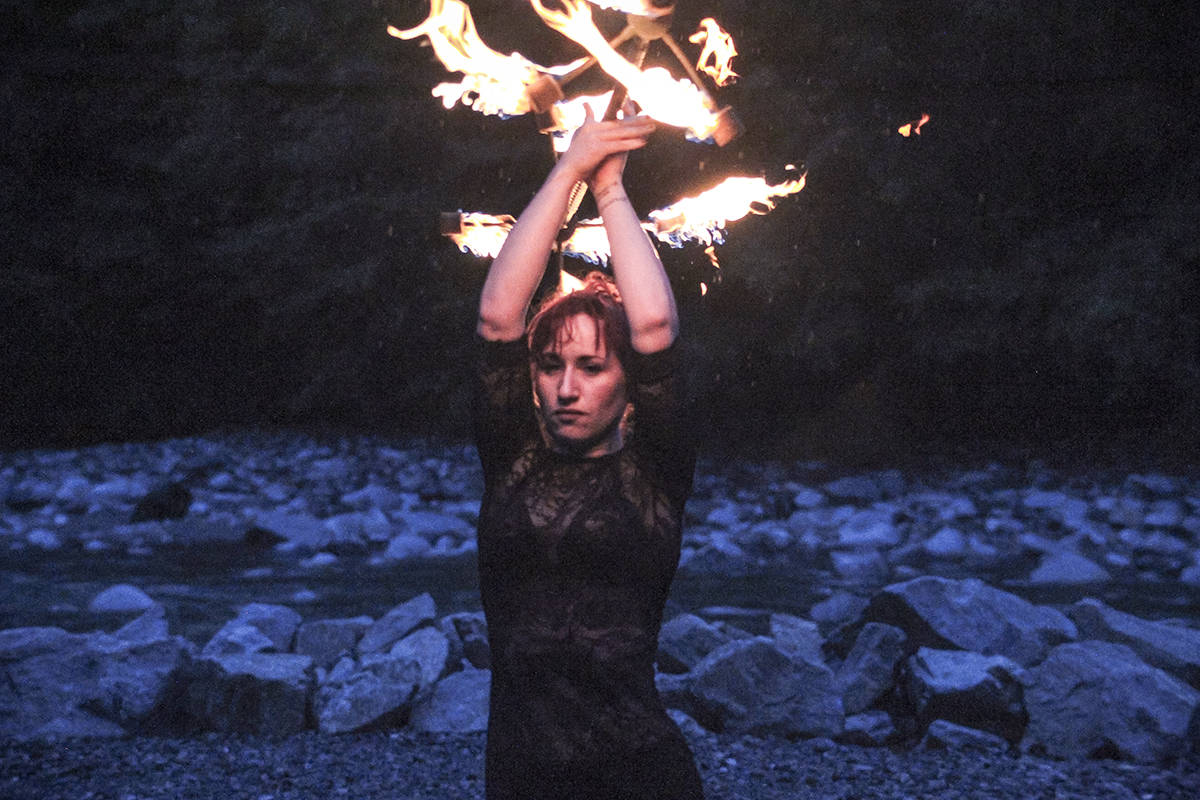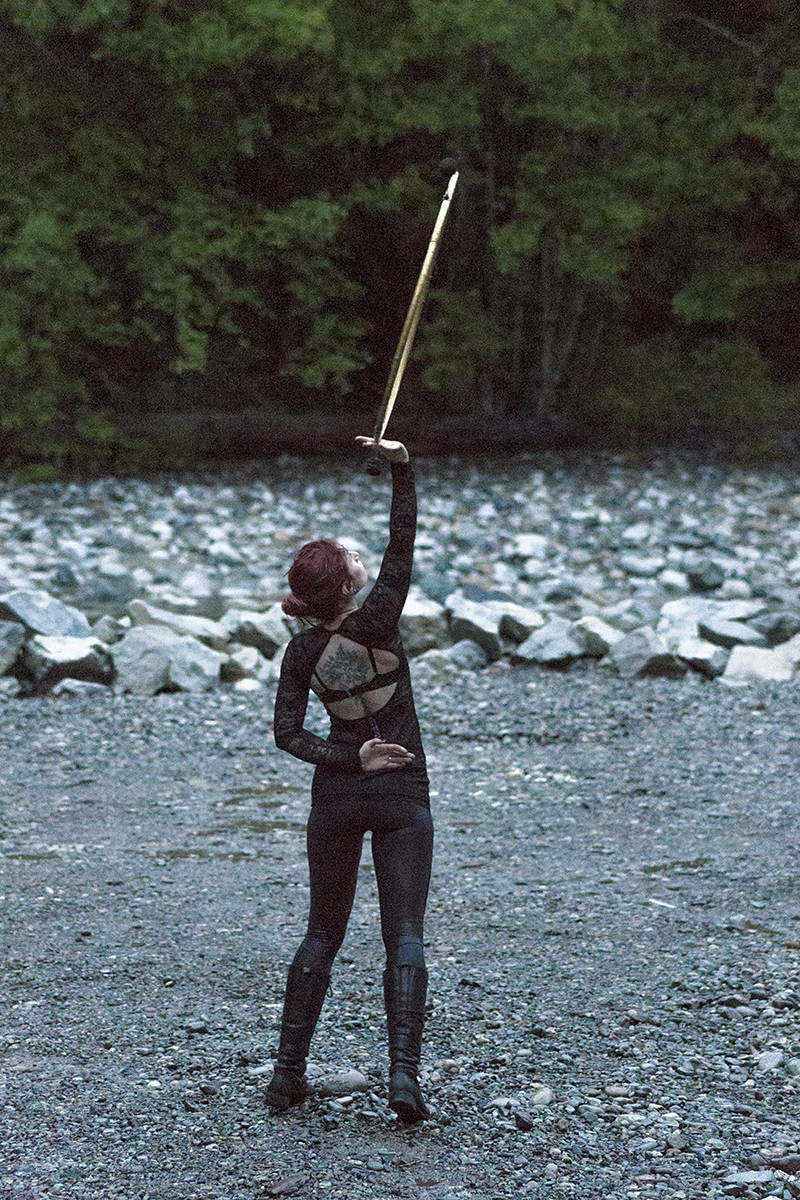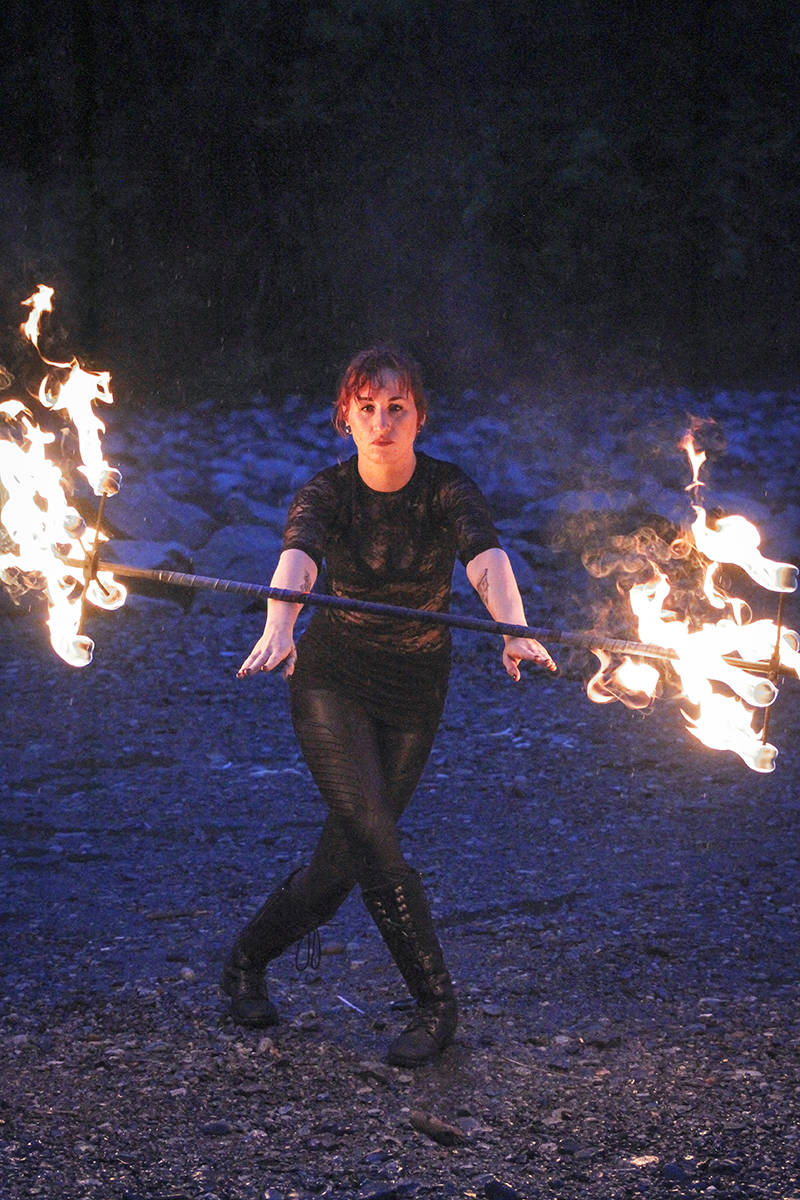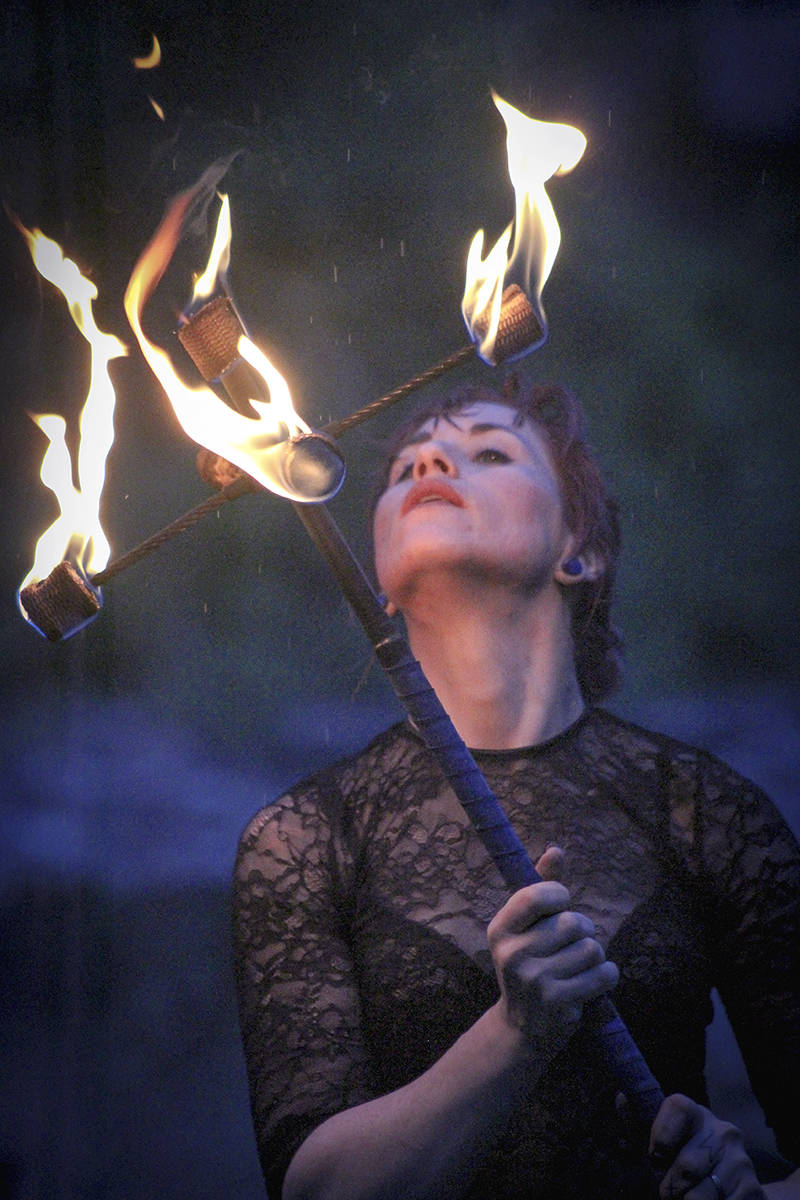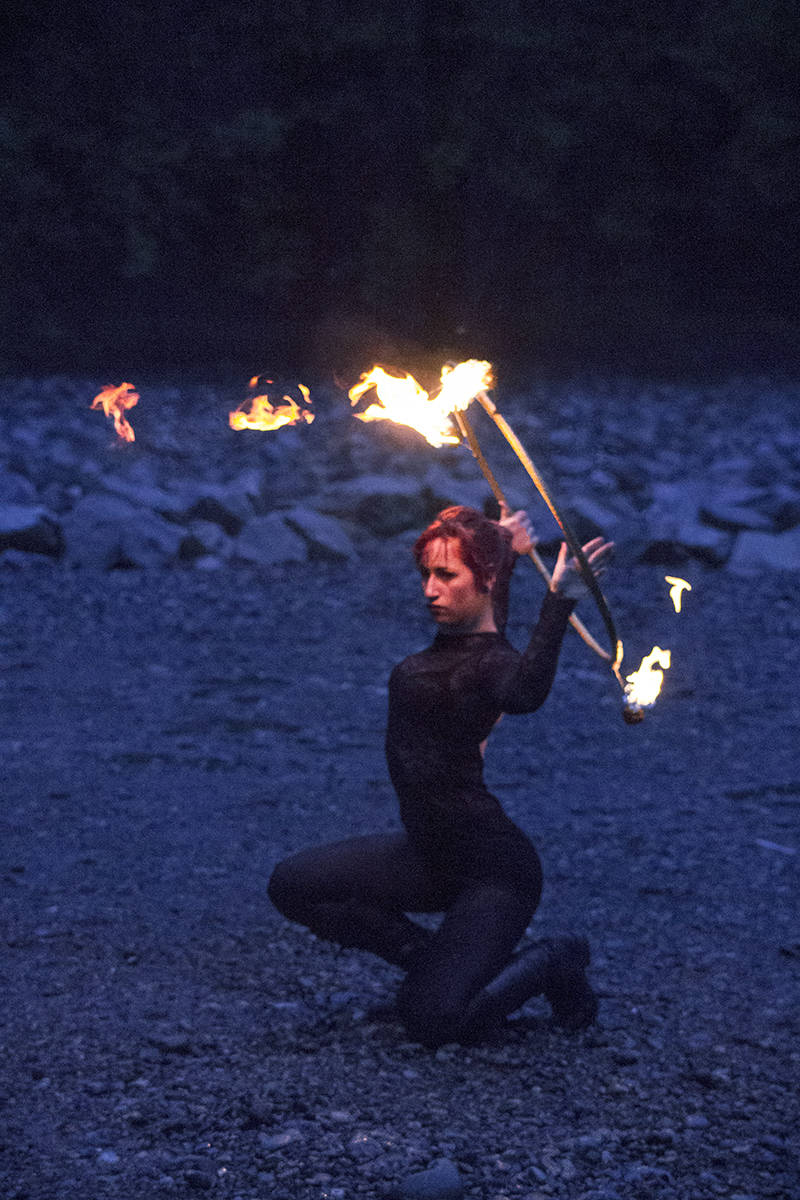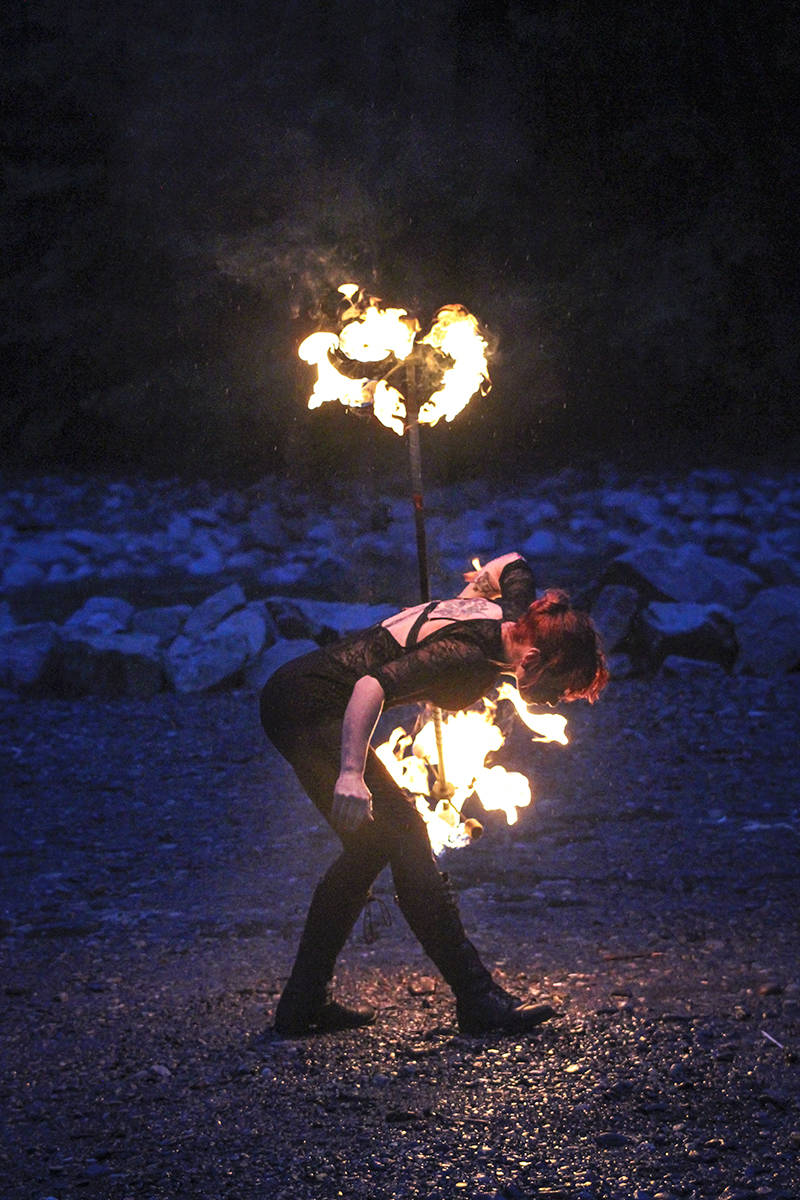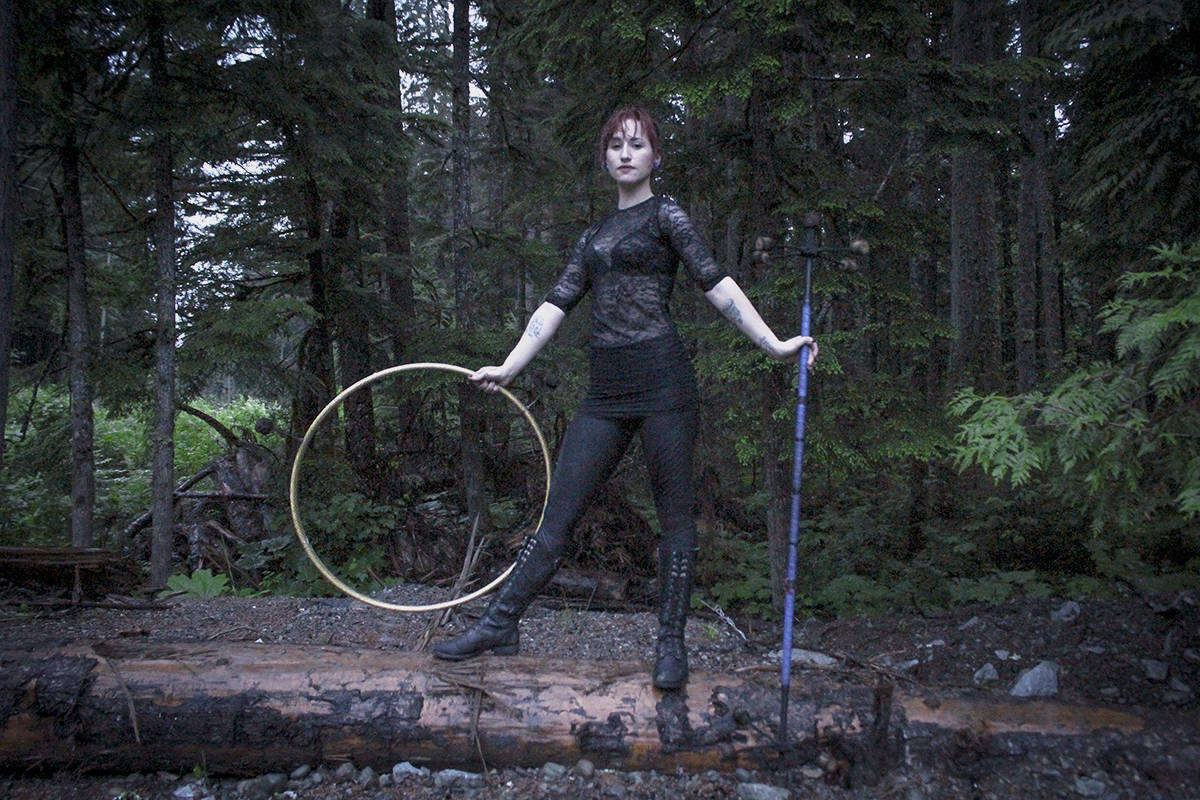Dipping giant wicks attached to a hula hoop into gasoline, Katarinna Maxwell is careful to not let any of it drip onto her clothing or hair. In just a few moments, she will step into a circle of fire — one that she has spent years learning how to tame through dance.
Since she was a child, Maxwell says she’s always been attracted to art in various forms and felt it was her anchor when navigating darker moments in her life. From playing instruments and painting to delving into anything that required creative thought, it was only time that would light her path into becoming a fire and flow artist.
“There’s a bit of an adrenaline rush, that’s kind of what’s attractive about it,” Maxwell says. “I just love the exhilarating feeling of dancing with fire and how spinning it around with it increases your mindfulness of what you’re doing.”
The flow arts is used to describe the intersection of various movement-based skills, including dance, juggling, object manipulation, staff spinning and hooping. New props and motions continue to emerge as the art form becomes a common practice at festivals and within fringe culture. Eventually, fire can be added to the performances once the artist has mastered control of their craft.
READ MORE: Skeena Voices | Once upon a brewery
For Maxwell, it’s a moving meditation. The art form calls for full concentration between mind and body, which she says helps translate her emotions into a movement. When she feels the world is on fire around her, literally and figuratively, she knows how to calmly extinguish it with ease.
“[It was] the thing that really kept me deepening my dance… and it started to become my crutch to escape depression,” says Maxwell. “Life was throwing me a lot of curveballs…I started to rely on the art forms that I practiced to distract me from feeling low and depressed… I would usually just grab the hoop, go somewhere nice, put on some really good tunes and dance it out.”
Although she was born in Terrace and returned here a few times, she spent the majority of her childhood in Iskut, B.C., where she lived with her mother and grandmother, both of whom she describes as very creative and expressive individuals. Her most vivid memories were made in the living room, where they would all learn how to belly dance from watching VCR tutorials.
“I remember being somewhat interested in that because it’s a very flowy type of dance… I would go try and join them, just for the fun of it,” she says. “It became a family time thing, just for the ladies.”
READ MORE: Skeena Voices | Highway of Hope
In her teenage years, she spent some time on Vancouver Island where she says she tried a few pole dancing classes. Through that, she was introduced to hula hooping and having a self-taught attitude approach, she was determined to learn everything about it.
“I found hoop dancing because it was a pretty big thing around 2011… it really picked up popularity with Shambala and [other] music festivals where that kind of stuff was happening,” Maxwell says. “From there, it just became an ongoing practice that I was really in love with and I became really focused on it for some reason.”
Buying a cheap hoop from the dollar store, she found herself in the living room once again. Maxwell would watch videos online to teach herself more about it and how to move it in different ways, sometimes knocking down a few items in the process.
Soon after, she came across a few friends on the beach who were playing with a fire bo staff and it sparked a curiosity for her. As she deciphered their movements and asked detailed questions, they let her take the weighted stick for a spin.
Discovering she could combine hula hooping with fire, it set the bar higher for her.
“I started to focus on more foundational moves with hula dancing, rather than just the tricks. I [felt] how my body was moving in relation to it and the extensions I should be making with my arms,” Maxwell says. “[I thought more about] which directions I should be going, my steps and how to do that to make everything come together really beautifully.”
Maxwell says flames made her initially feel nervous and she carried a lot of hesitation. She knew it was a dangerous art form to dabble into without guidance but was too enchanted to walk away from it. She promised her mother she would stay away from fire-eating.
She researched about fire safety in the flow arts, from reading what materials to wear and how to respond if something went wrong. She had made the investment to buy a professional hoop and discovered she had a natural knack for it, but the idea of possibly setting herself on fire was still nerve-wracking.
“I kind of didn’t know how I felt about it… it was frightening, it was definitely a trial by fire,” she says. “I hit myself in the back of the head [once] and it sparked up a little bit… I definitely learned early on what not to do.”
Maxwell says she discovered “fire tracing”, an art form of dragging burning wicks across the skin to enlight parts of the body and being able to transfer flames using hands. Generally, a performer covers themselves in a special oil that shields them from the heat and minimizes any pain.
READ MORE: Skeena Voices | Somewhere over the rainbow
Moving back to Terrace a few years ago, she befriended another woman who shared the same enthusiasm towards the flow arts and easily convinced her to join her fire quest.
With a few nurse friends and a first-aid kit on site during their first set of practices, they experimented with lighting themselves on fire until they grew accustomed to the tingling sensation across their skin and felt comfortable controlling the flames.
“[It’s important] to not repeat past the point of your body clearly telling you that you’ve had enough, because the more that you keep burning the same area, the more you’re worsening that area by intensifying that heat,” she says. “I have been lucky that nothing has gone wrong but [it has] for other people who have jumped blindly into it.”
READ MORE: Skeena Voices | Playing with the sun
Now at the age of 25, Maxwell’s old pickup truck is loaded with an array of fire flow gear that she carries with her to every gathering she goes to in case she feels like performing. She says it depends on her mood if she wants to take out her equipment and put on a show.
There are no venues for her to perform at in Terrace, so the majority of her public appearances are spontaneous and reflect the energy of the event. She always makes sure she has her friend, who also steps in as her “spotter” and helps develop her art further.
“Having a friend who is also into fire makes the process a little more tolerable because you feed off of each other synergy.”
Surpassing her hula hooping goals, she says she’s eager to perfect the other flow art forms.
And despite her mother’s wishes, she laughs that she’s finally worked up the courage and is learning how to eat fire, which was just “the next logical step.”
natalia@terracestandard.com
Like us on Facebook and follow us on Twitter
